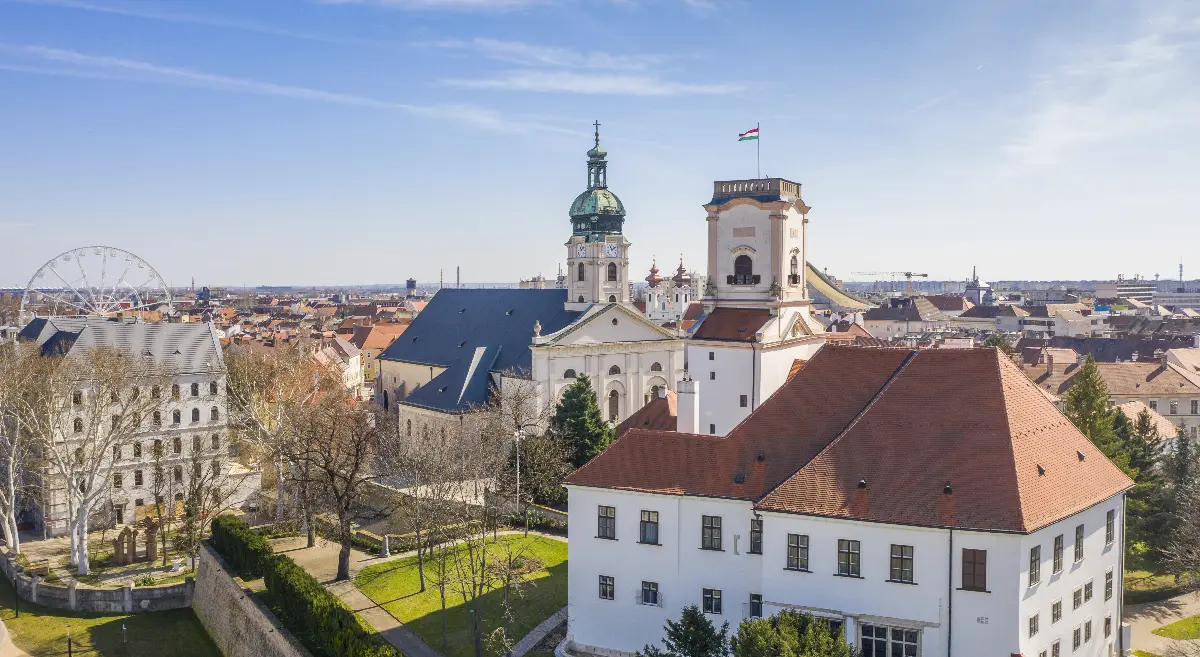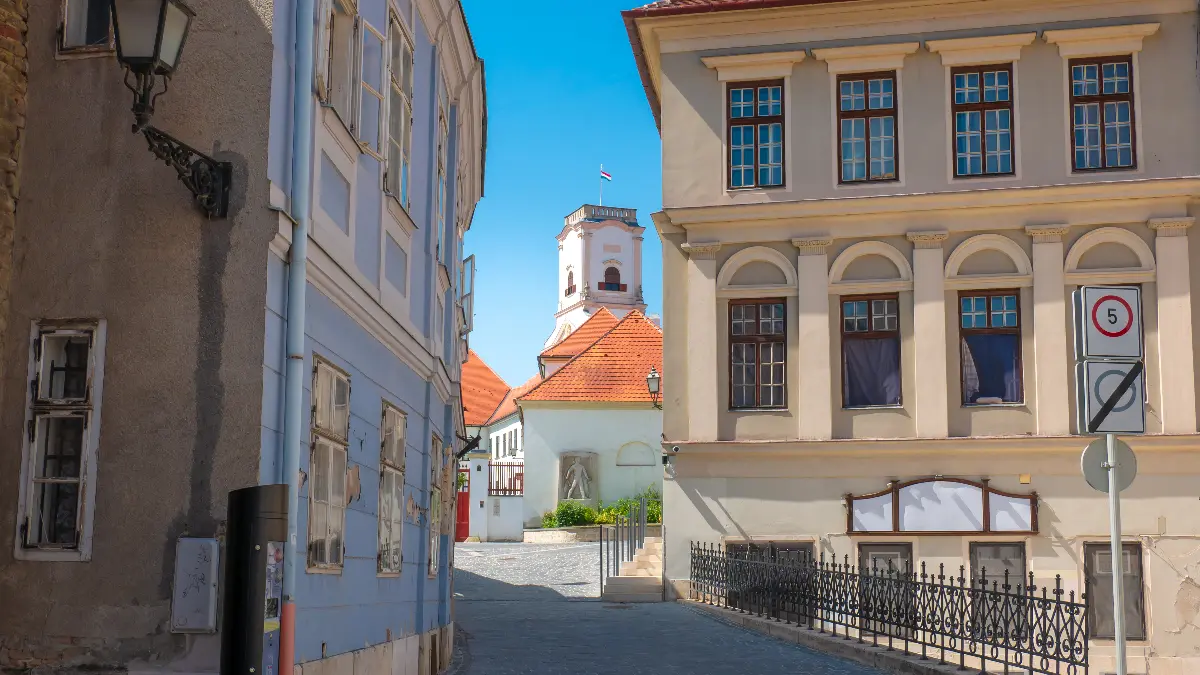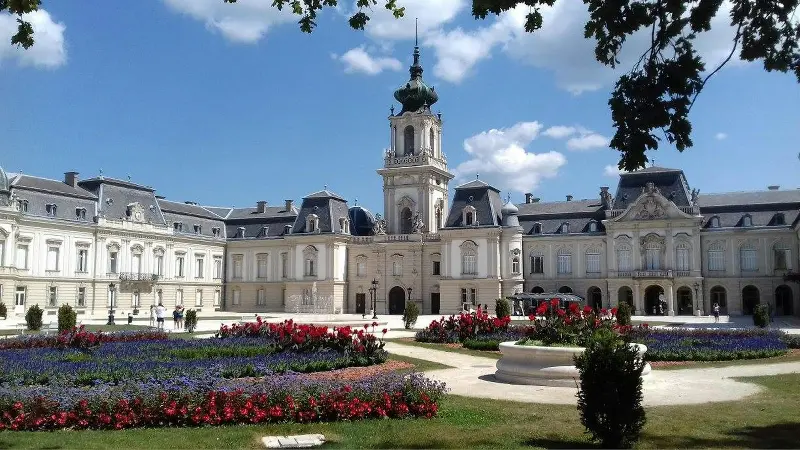
Helyszín címkék:
The built heritage of the “Káptalandomb” (Káptalan Hill) in Győr
Bóday Csilla
The “Nagyboldogasszony-Székesegyház” (Cathedral of the Virgin Mary)
The most important church of the bishopric of Győr, founded by St Stephen, was built in the 11th century in the Romanesque style on the “Káptalandomb” (Káptalan Hill), the oldest part of the city, at the confluence of the Rába and the Moson-Danube. Unfortunately, there is not much left of the original building today, and apart from the frequent fires, the Mongol invasion had such a devastating effect that it had to be completely rebuilt. During Pope John Paul II's visit in 1996, he elevated the cathedral to the status of a basilica minor, which is also home to three important sacral monuments. On the altar of its north aisle is the icon of the Virgin Mary in tears, which came to us from Ireland in the mid-17th century and to which we owe the birth of one of the city's legends. The King Knight's Herm, which is currently on display in a special room of the “Szent László Látogatóközpont” (Saint Ladislaus Visitor Centre) due to renovation works. Located also in the Héderváry chapel is the tomb of the martyred bishop Blessed Vilmos Apor, a modern-day pilgrimage site among the faithful.
History and style of the Cathedral
Only the apse of the cathedral actually survived after the fires of the Mongol invasion. The Romanesque style has been replaced by Gothic, and the reconstruction has given it a raised sanctuary and a crypt. The chapel of János Héderváry was built in the 15th century, which was also the original place of the Herm of Saint Ladislaus. Bonfinius, King Matthias's court historian, refers to the Gothic-style, two-towered church as “an outstandingly bright cathedral”. The cathedral, which was used as a military warehouse and later as a fortress during the Ottoman Empire, suffered further damage. One of its towers collapsed, the other was destroyed by lightning. There was a time when the north nave was used as a gun-emplacement, the sacristy and the Héderváry chapel as an ammunition store, and the remaining space was occupied by horses and used as stables. It was a great challenge for Italian architect Giovanni Battista Rava to rebuild the ruined cathedral. By the end of the 17th century, after several decades of construction, the now Baroque church was completely finished, flanked by the cup shaped towers that can still be seen today. The altars, frescoes and the final interior were completed by the end of the 1780s.

The altar of the weeping Virgin Mary
The icon belongs to the picture type of the Sleeping Mary or the Joyful Mary. The copperplate engraving by Abraham van Merlen, dating from around 1640, suggests that it is a work by an Irish painter. The floral motifs of Mary praying for her sleeping child and the Child's blanket may refer to the Song of Songs. On March 17th, 1997, on the 300th anniversary of the Blessed Virgin Mary weeping tears of blood, Cardinal Gilberto Agustino celebrated a solemn papal legate mass in the presence of the entire Hungarian episcopate in the church. A few years ago, the altar of the Weeping Virgin Mary was restored.
The “Püspökvár” (Bishop's Castle) Watch Tower

The most iconic building in Győr is the “Püspökvár” (Bishop's Castle), opposite the cathedral, which has been the seat and residence of the bishop since the 18th century. The core of the “Püspökvár” (Bishop's Castle) is the four-storey residential tower, a sturdy, two-storey-high, split-level structure. It has a baroque upper part and a gothic chapel to the south, with an apse with three sides of an octagon. Going up the narrow stairs, you come to a small room, the resting area. There is the place where the guard once kept watch over the Danube Bank. On the floors of the square disfigured tower are coats of arms of ecclesiastical dignitaries and the throne used by Pope John Paul II during his visit in 1996. The winter suite has valuable Baroque furniture. The summer suite is located in the north wing and is furnished with Empire and Biedermeier furniture. The inlaid gilt, richly decorated interior is stunningly beautiful.







